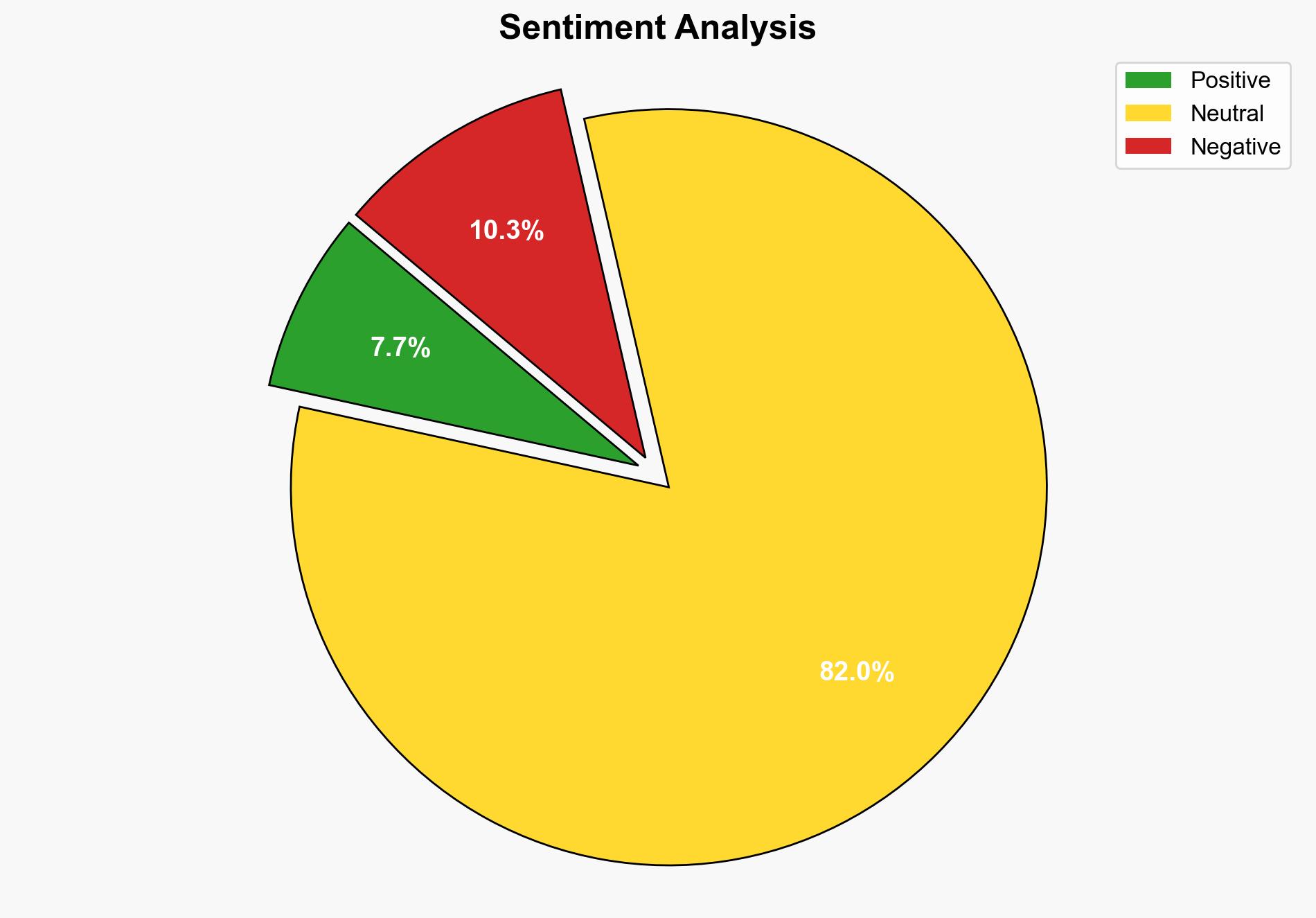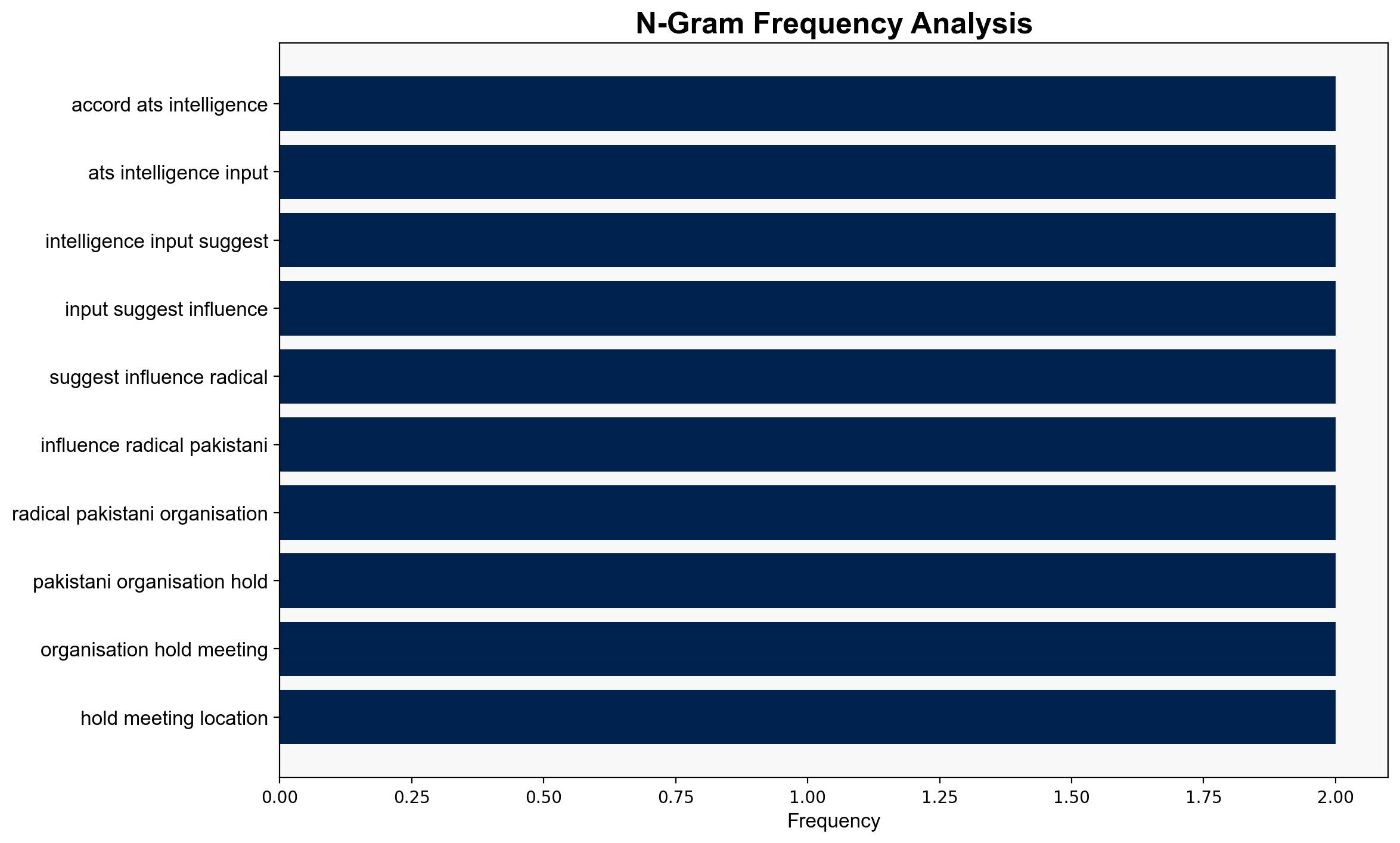4 planning to build ‘Mujahideen Army’ overthrow govt held in UP – The Times of India
Published on: 2025-09-29
Intelligence Report: 4 planning to build ‘Mujahideen Army’ overthrow govt held in UP – The Times of India
1. BLUF (Bottom Line Up Front)
The most supported hypothesis is that the arrested individuals were influenced by radical organizations to form a ‘Mujahideen Army’ with the intent to destabilize the government through violent means. This hypothesis is supported by the intelligence inputs and the individuals’ confessions. Confidence level: Moderate. Recommended action includes enhancing monitoring of radical networks and increasing community outreach to counter extremist narratives.
2. Competing Hypotheses
1. **Hypothesis A**: The individuals were indeed planning to form a ‘Mujahideen Army’ with the intent to overthrow the government and impose Sharia law, influenced by a radical Pakistani organization.
2. **Hypothesis B**: The individuals were not seriously planning an attack but were instead posturing or exaggerating their intentions, possibly influenced by online extremist propaganda without concrete plans for action.
Using ACH 2.0, Hypothesis A is better supported due to the confessions, possession of extremist literature, and evidence of financial transactions for arms procurement.
3. Key Assumptions and Red Flags
– **Assumptions**: It is assumed that the confessions are truthful and not coerced. The influence of the Pakistani organization is assumed based on intelligence inputs.
– **Red Flags**: Lack of detailed evidence regarding the operational capability of the group. Potential bias in interpreting the intent behind the financial transactions.
– **Blind Spots**: The extent of the group’s network and support remains unclear, as does the role of social media in their radicalization.
4. Implications and Strategic Risks
The potential formation of a ‘Mujahideen Army’ poses significant risks, including violent attacks on government and religious leaders, which could destabilize regional security. Economic implications include potential impacts on local businesses and tourism. Geopolitically, this could strain relations with neighboring countries if external influences are confirmed. Cybersecurity risks include the use of social media for radicalization and propaganda.
5. Recommendations and Outlook
- Enhance intelligence-sharing mechanisms with regional and international partners to track radical influences.
- Increase community engagement and counter-radicalization programs to address extremist narratives.
- Scenario Projections:
- Best Case: Successful disruption of the network leads to decreased radicalization and improved regional stability.
- Worst Case: Failure to address the root causes leads to increased recruitment and potential attacks.
- Most Likely: Continued monitoring and targeted interventions prevent immediate threats but require sustained efforts.
6. Key Individuals and Entities
– Akmal Raza
– Safeel Salmani (alias Ali Razvi)
– Mohammad Tausif
– Qasim Ali
7. Thematic Tags
national security threats, cybersecurity, counter-terrorism, regional focus





